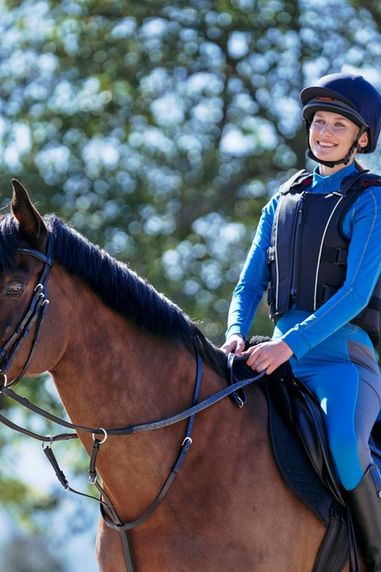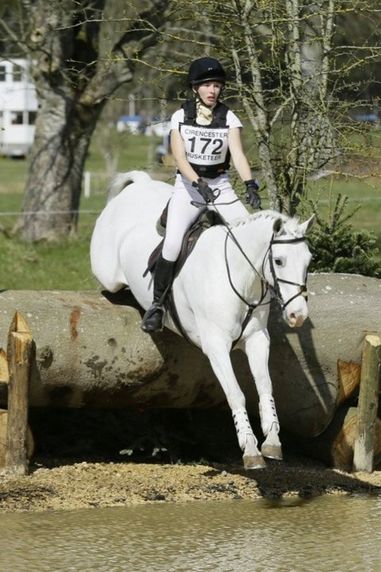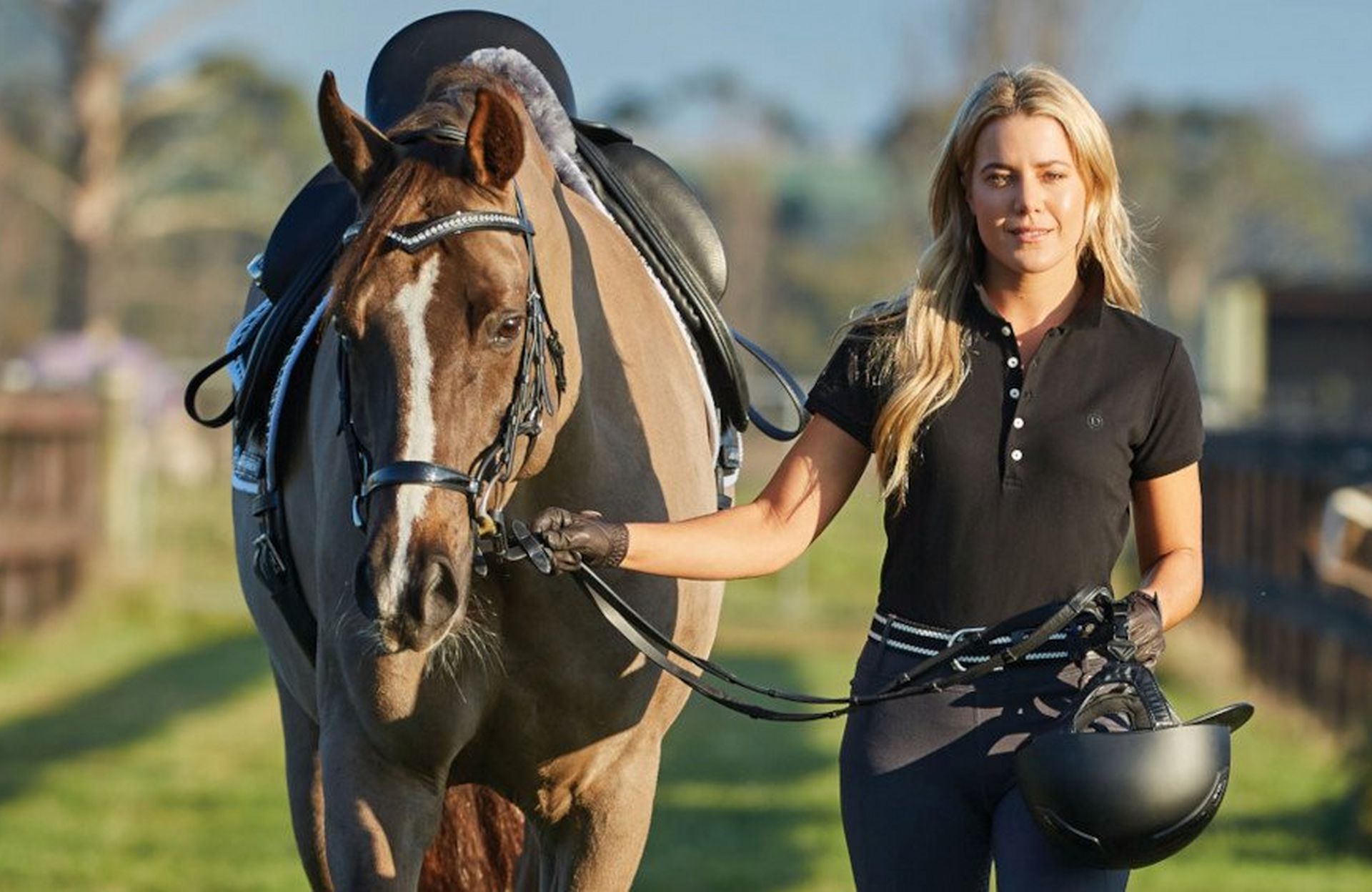
There’s no denying, the hunt for a new horse is seriously hard work but when you’ve finally found the right one for you, there’s really nothing more exciting! The minute the deposit is handed over, the race is on… There’s lots to be done. From insurance and passport changes to feed and daily care, the list is endless. Here we take a look at just some of the things you might need to consider.
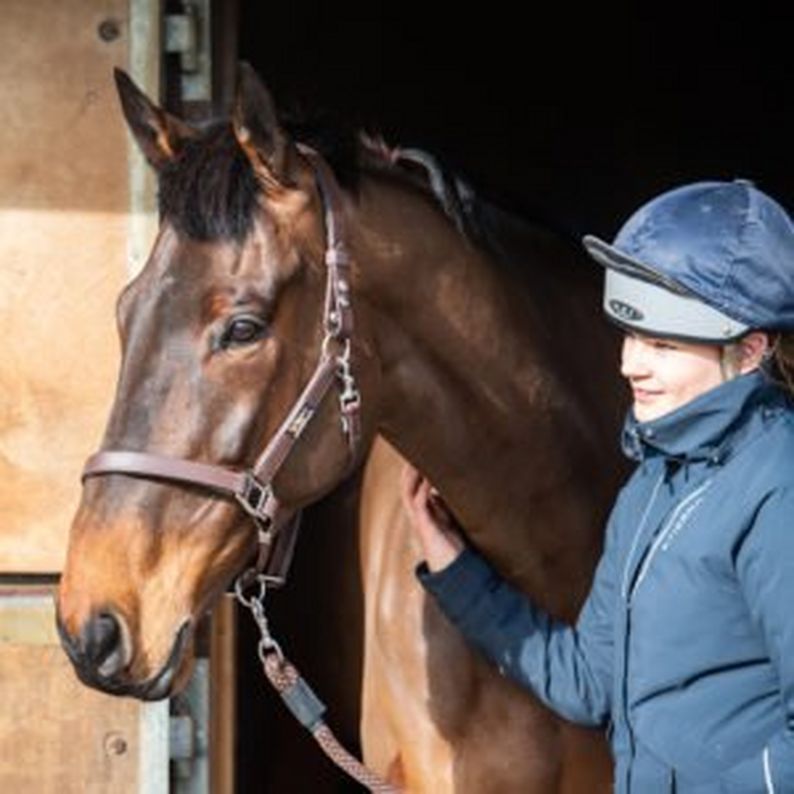
Headcollar & Leadrope
A headcollar is a headcollar, right? Wrong! Not only do you need to find the perfect colour but there are lots of styles too. They may look similar but subtle differences can make a real difference in the day-to-day handling of your new horse. Take a look at the different types and when they may be appropriate:
Nylon Headcollars – The most common style, these are durable, hard wearing and great for most horses that lead out well.
Fleece Lined / Padded Headcollars – These are great for thin skinned, sensitive types. They’re soft, comfortable and less likely to rub.
Wide Headcollars – Wide headcollars are ideal for responsive and reactive horses. They spread pressure over a large area, avoiding overly sharp aids.
Rope Halters – Rope halters are designed to apply pressure to very specific points on the horses’ face. This can be helpful for ‘numb’ types that are prone to leaning or ignoring aids.
Control Headcollars – Control halters are designed for strong, unpredictable and lively horses, they’re typically used on stallions and young stock.
Field Headcollars – If your new horse can be tricky to catch, you may choose a field safe headcollar, suitable for turning out.
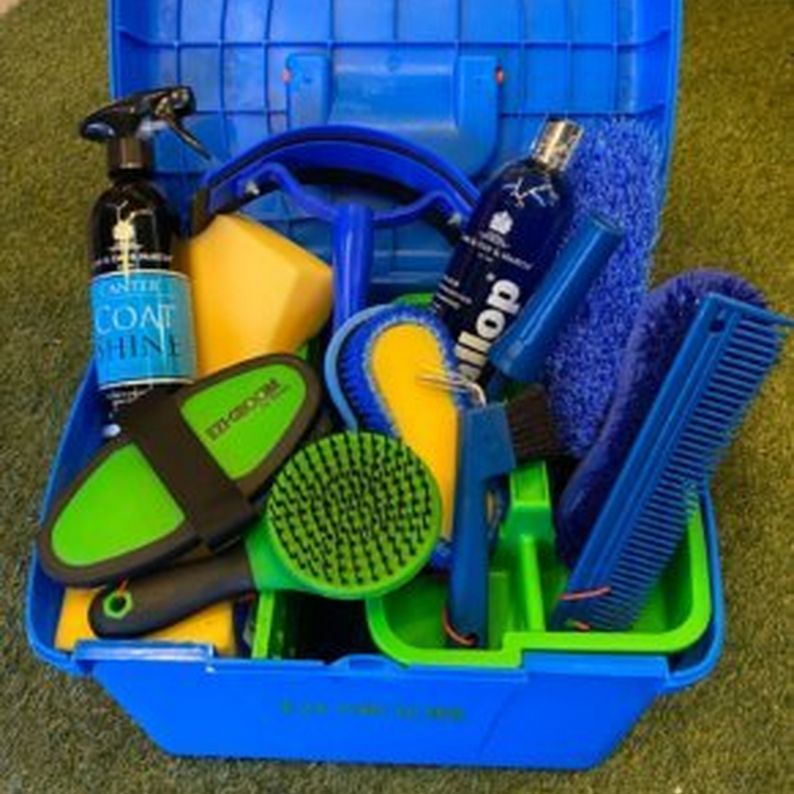
Grooming Kit
For hygiene purposes, every horse that you own should have their own set of grooming brushes. After all, you wouldn’t share your friend’s make-up brushes!
Whether you’ve gone from a hairy cob to a sleek TB or from a grey to a bay, no two horses are the same! While we all need the basics such as a curry comb, body brush, dandy brush, mane brush and hoof pick, there’s lots of other items you may want to consider too.
Hairy Horses – The key with hairy horses is shedding tools and mane & tail! Keeping their coat slick during shedding season takes constant upkeep but it will help to prevent mats. Daily application of sprays could seem excessive however, it’s a good way to remove knots and it can even help to prevent them too.
Greys – Blood, sweat, tears and shampoo! Keeping a grey clean can be a tricky task but with the right kit it can be done. Keep an eye out for chalk, stain removers and soap, they’ll be your new best friends.
Dark Horses – It’s all about the shine! If you’re lucky enough to own a beautiful bay or black horse item’s such as a goat hair brush and coat shine can really help them gleam.
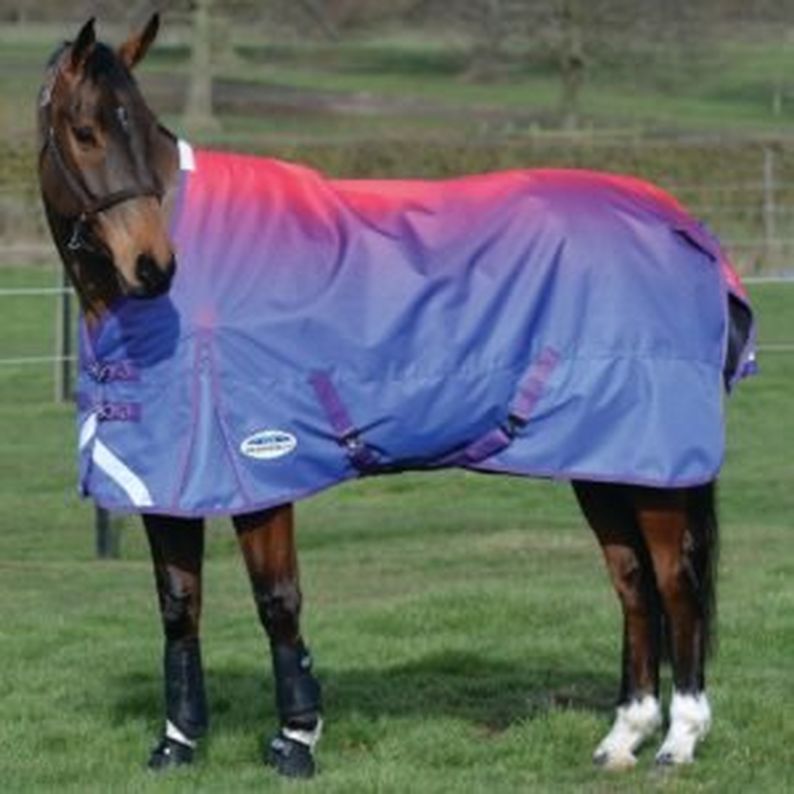
Rugs
Horses come in a whole range of shapes and sizes. We hope they do but it’s unlikely that the rugs stashed in the back of your tack room will fit. Once your new horse arrives it’s a good idea to take measurements to help find the right size. While not every horse will need a full wardrobe here’s a few additions you may want to think about making to see you through the seasons:
Fleeces & Coolers – A versatile fleece or cooler rug is great for stabling during mild weather, drying off after a bath or work and wearing during transport.
Stable Rugs – If your new horse is likely to be stabled, this is a great addition to their winter wardrobe. Not all horses will require a stable rug, however if they drop weight easily, are sensitive to the cold or are likely to be clipped, they’re an essential!
Turnout Rugs – The majority of horses will benefit from a turnout rug. We don’t need to tell you that here in the UK it rains… A lot! The weight will depend on your new horses’ condition and how much they feel the cold. It’s a good idea to start with a lightweight that’s liner compatible, this way it can be adapted as the seasons change and you become more accustomed to their needs.

Feed & Supplements
The temptation when you purchase a new horse is to buy the feed you’d like them to have. Before you do this though, it’s best to find out if they’re currently given any feed or supplements and why. Any changes you choose to make should be both justified and gradual.
The safest way to make changes to your horses’ diet is to do it slowly. Alterations should be slight, taking place over days or even weeks. As a rule, you should aim to introduce no more than 25% of a new feed or forage every two to three days. This allows your horse time to adapt to the changes in fibre content and nutritional value.
When picking a new feed or supplement, we’d recommend contacting your preferred brands support team for tailored advice:
- Dengie: 01621 841 188
- Baileys: 01371 850 247 (option 2)
- Spillers: 01908 226 6 26
- TopSpec: 01845 565 030
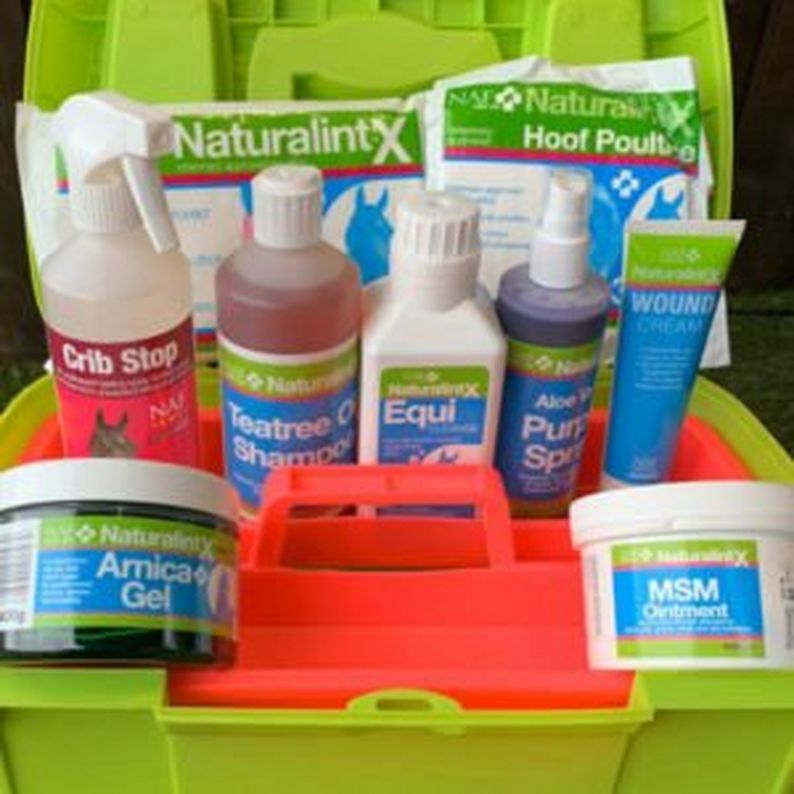
Vet Registration & Insurance
Time is of the essence! One of the very first things you should do after paying the deposit on your new horse is to get them registered with your preferred vet and insured with an appropriate policy!
It’s no secret that horses have a tendency to injure themselves or become unwell at the very worse time possible. Vet bills can become very costly, in some cases stacking up to thousands of pounds. If we’re honest, very few of us can afford to pay for a new horse and shortly after pay-out for an unforeseen vet bill. It’s unlikely but should the unthinkable happen, it’s important that your vet has your new horses’ details and your chosen insurance policy is active.
Not all insurance policies are equal, there are a few different types available including mortality, major medical, loss of use and liability. The price of insurance can vary largely depending on the level of cover, your horses’ age, value and use.
Always check the small print when taking out insurance, cover varies and some policies will take longer to become valid than others. If you’re unsure, it’s worth making a call, even if only for peace of mind.

Passport
Prior to purchase, your new horse/ pony/ donkey or mule should be microchipped and passported.
An equine passport is needed to:
- Describe the animals markings, breed, colour and species.
- List all vaccinations and their castration status.
- Name the registered owner.
You will be asked to provide your horse’s passport:
- When a vet examines or treats your animal – The medication your animal can be given depends on how it’s categorised on its passport.
- If an animal health inspector, trading standards inspector or other enforcement officer asks to see it.
- When you sell or give the animal to someone else.
Once you’ve got your new horse, contact the Passport Issuing Organisation (PIO) within 30 days to update the ownership details. If the horse does not have a passport, contact your local trading standards office for advice.
Microchip
It is a legal requirement that all horses are microchipped as part of a move to tackle horse theft, improve equine traceability and improve animal welfare.
Once a horse is microchipped and the PIO are made aware, they will upload the number to the Central Equine Database. Once this is done, you can create a ‘Digital Stable’ account. Ad your new horse to the account to be able to:
- Instantly check and exclude your equine from the food chain.
- Check that your horses’ microchip is recorded on the CED and instantly update or add microchip information.
- Check that you’re recorded as owning your equine and ensure that no previously owned equines are still registered in your name – as you can be liable for these.
- Record your equine as missing using your Digital Stable and automatically update the National ChipChecker and local authorities.
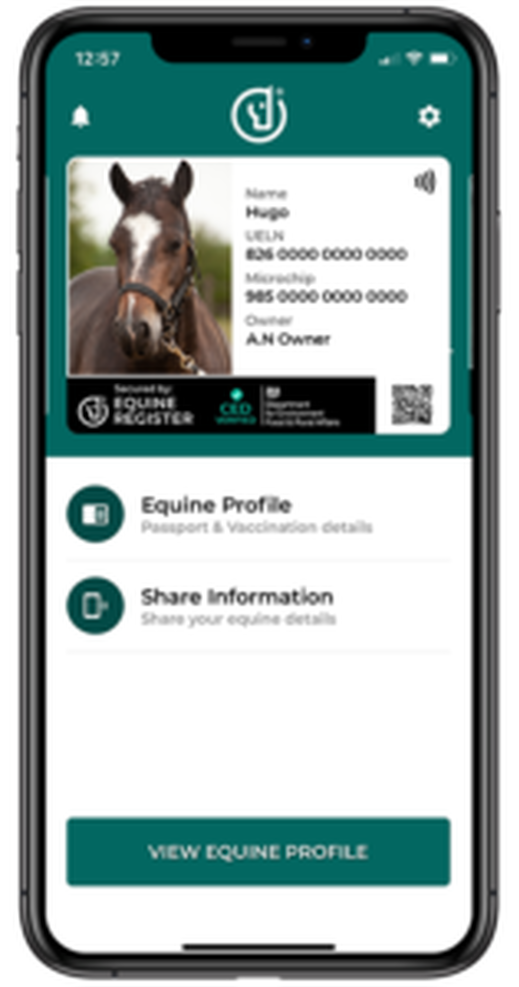


We hope this information has been helpful! Don't forget to share pictures of your new horse or pony in the comments. You can shop all of the products featured in this blog at Naylors.com or visit one of our stores.

